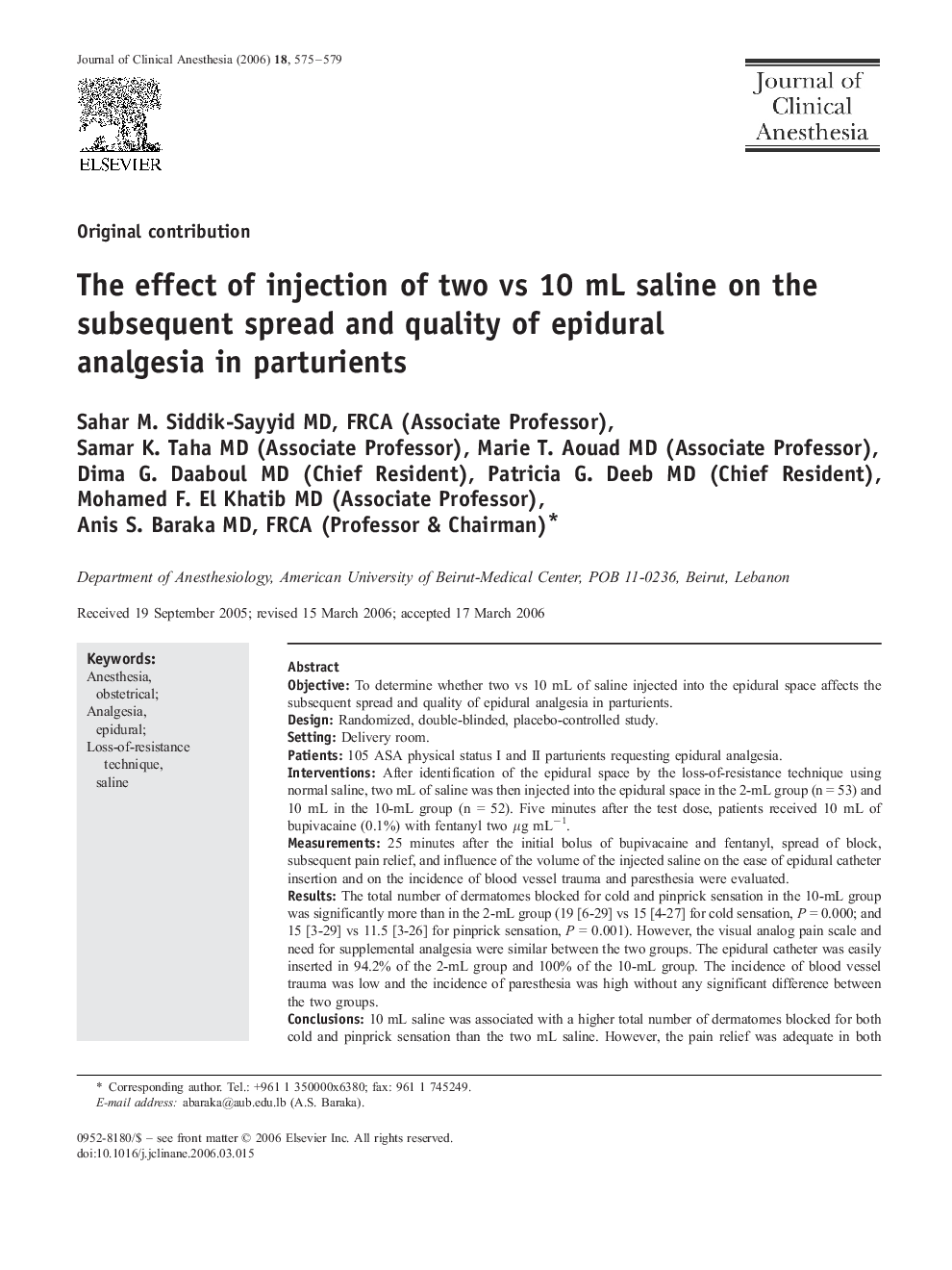| Article ID | Journal | Published Year | Pages | File Type |
|---|---|---|---|---|
| 2764110 | Journal of Clinical Anesthesia | 2006 | 5 Pages |
ObjectiveTo determine whether two vs 10 mL of saline injected into the epidural space affects the subsequent spread and quality of epidural analgesia in parturients.DesignRandomized, double-blinded, placebo-controlled study.SettingDelivery room.Patients105 ASA physical status I and II parturients requesting epidural analgesia.InterventionsAfter identification of the epidural space by the loss-of-resistance technique using normal saline, two mL of saline was then injected into the epidural space in the 2-mL group (n = 53) and 10 mL in the 10-mL group (n = 52). Five minutes after the test dose, patients received 10 mL of bupivacaine (0.1%) with fentanyl two μg mL−1.Measurements25 minutes after the initial bolus of bupivacaine and fentanyl, spread of block, subsequent pain relief, and influence of the volume of the injected saline on the ease of epidural catheter insertion and on the incidence of blood vessel trauma and paresthesia were evaluated.ResultsThe total number of dermatomes blocked for cold and pinprick sensation in the 10-mL group was significantly more than in the 2-mL group (19 [6-29] vs 15 [4-27] for cold sensation, P = 0.000; and 15 [3-29] vs 11.5 [3-26] for pinprick sensation, P = 0.001). However, the visual analog pain scale and need for supplemental analgesia were similar between the two groups. The epidural catheter was easily inserted in 94.2% of the 2-mL group and 100% of the 10-mL group. The incidence of blood vessel trauma was low and the incidence of paresthesia was high without any significant difference between the two groups.Conclusions10 mL saline was associated with a higher total number of dermatomes blocked for both cold and pinprick sensation than the two mL saline. However, the pain relief was adequate in both groups, and two mL saline was as effective as the 10 mL in the ease of catheter insertion and prevention of intravascular cannulation.
